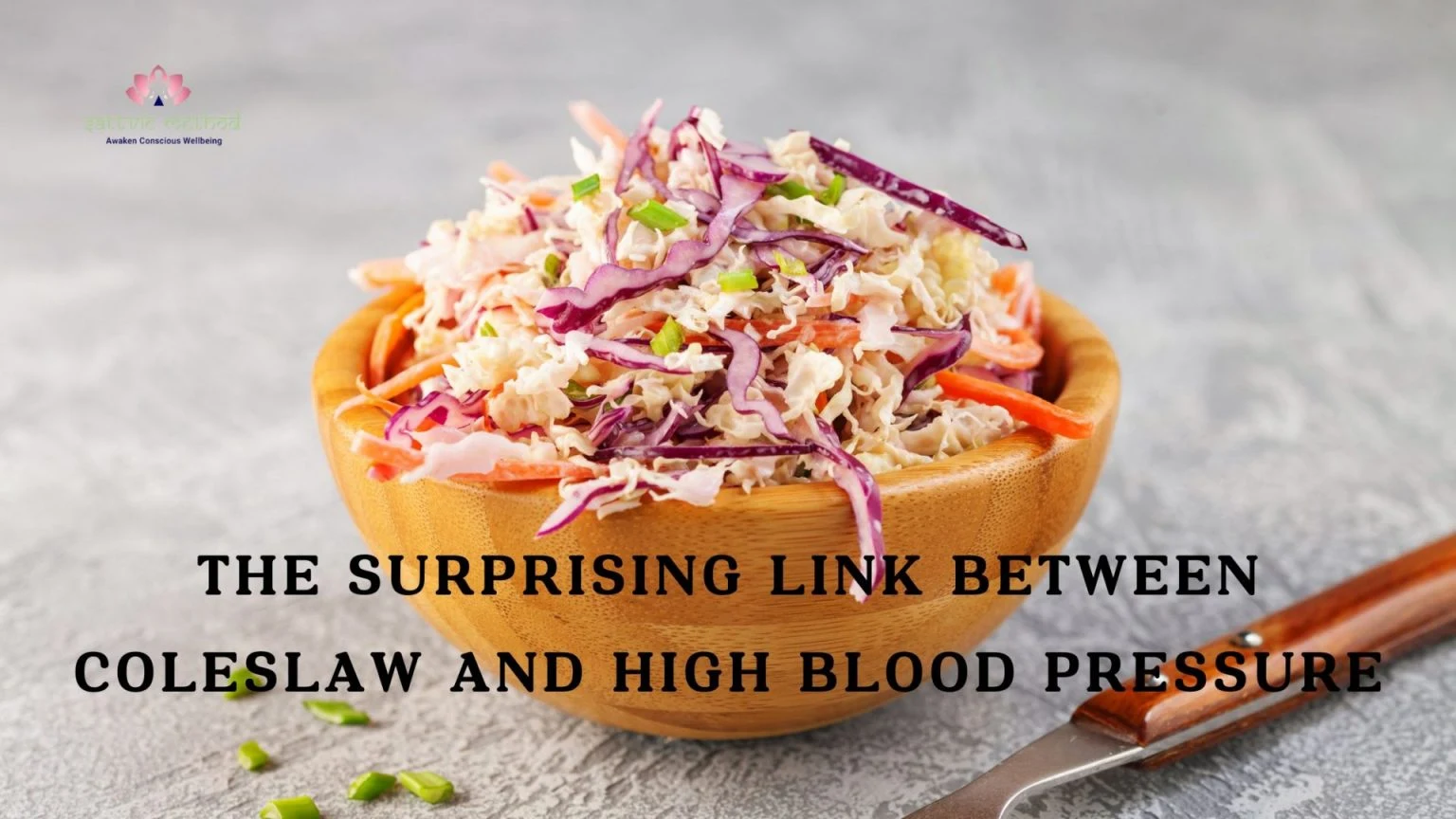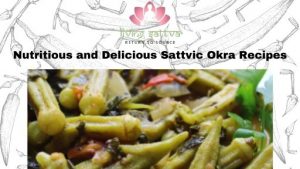Are you a fan of coleslaw? You might want to be cautious. In a surprising twist, recent studies have revealed a potential link between coleslaw consumption and high blood pressure. Yes, that delicious side dish that we often enjoy with our favorite meals could be putting our health at risk. But how, you might ask?
Well, coleslaw typically contains high levels of sodium, which is a well-known culprit when it comes to elevated blood pressure. The combination of cabbage, mayonnaise, and other ingredients can create a deceptively unhealthy dish. And with hypertension being a major risk factor for heart disease, stroke, and other cardiovascular issues, it’s time to sit up and take notice.
But don’t fret just yet; not all coleslaw is created equal. There are healthier alternatives available that use low-sodium ingredients and incorporate heart-healthy elements. In this article, we’ll delve into the surprising link between coleslaw and high blood pressure, explore the potential risks to your health, and provide some tips on how you can enjoy this classic dish without compromising your well-being.
So, next time you reach for that bowl of coleslaw, make sure you’re aware of the potential consequences. It’s time to make informed choices for a healthier future.
Understanding High Blood Pressure and Its Health Implications
High blood pressure, medically known as hypertension, is a condition that affects millions of people worldwide. It occurs when the force of the blood against the walls of the arteries is consistently too high. This can lead to serious health complications, including heart disease, stroke, kidney damage, and even vision loss. The World Health Organization estimates that around 1.13 billion people globally have hypertension, making it a significant public health concern.
Hypertension often goes unnoticed because it typically doesn’t present any symptoms. This silence can be particularly dangerous, as many people may not realize they have the condition until they experience a severe complication. Regular monitoring of blood pressure is crucial, especially for individuals at risk, such as those with a family history of hypertension, obesity, or sedentary lifestyles. Understanding the implications of high blood pressure is essential for prevention and management, as it is commonly referred to as the “silent killer.”
The impact of hypertension extends beyond individual health. It poses a substantial economic burden on healthcare systems due to the costs associated with treatment and management of related complications. Additionally, the lifestyle choices that contribute to high blood pressure—such as poor diet, lack of exercise, and excessive alcohol consumption—can affect overall health and quality of life. A comprehensive understanding of hypertension and its implications can empower individuals to take proactive steps toward better health.
The Link Between Coleslaw and High Blood Pressure
The relationship between coleslaw and high blood pressure may not be immediately apparent, but it is crucial to explore this connection. Coleslaw, a popular side dish often served at barbecues, picnics, and family dinners, is primarily made from cabbage and a dressing, typically mayonnaise or vinegar-based. While it may seem innocuous, certain ingredients can significantly impact blood pressure levels, particularly through sodium content.
Sodium is a key contributor to hypertension, as excessive intake can lead to fluid retention, increasing blood volume and, consequently, blood pressure. Many commercial coleslaw dressings and pre-packaged versions contain high levels of sodium, making them a potential risk for those already struggling with hypertension. Additionally, the portion sizes often consumed during meals can exacerbate this issue, leading to unintentional overconsumption of sodium.
Furthermore, the context in which coleslaw is eaten can also influence its effects on blood pressure. When served alongside high-sodium foods, such as processed meats or potato chips, the cumulative sodium intake can reach dangerous levels. Understanding the link between coleslaw and hypertension is vital for making informed dietary choices that promote heart health.
The Ingredients in Coleslaw That May Contribute to High Blood Pressure
Coleslaw’s primary ingredient, cabbage, is generally healthy and low in calories. However, the real concern arises with the additional ingredients, particularly the dressing. Traditional coleslaw dressings often include mayonnaise, which, while creamy and delicious, can also contribute to unhealthy fat intake. More importantly, many commercial mayonnaise brands contain high sodium levels, which can elevate blood pressure.
In addition to mayonnaise, coleslaw recipes may incorporate other ingredients that can further increase sodium content. For instance, many recipes call for added salt, which is a direct contributor to hypertension. Even seemingly innocuous additions like celery salt or pickles can dramatically increase the overall sodium levels in the dish. It’s important to read labels carefully and be mindful of how much sodium is being added to coleslaw.
Moreover, the preparation method can also play a role. Some individuals may choose to add flavored dressings or sauces that contain additional preservatives and sodium. These can enhance flavor but at the cost of increasing the dish’s sodium content. Understanding the specific ingredients that make up coleslaw is crucial for those who are concerned about maintaining healthy blood pressure levels.
The Impact of Coleslaw Consumption on Blood Pressure Levels
Regular consumption of high-sodium foods, including coleslaw, can have a cumulative effect on blood pressure levels. For individuals who are already predisposed to hypertension, indulging in coleslaw made with traditional dressings can lead to spikes in blood pressure, particularly if consumed frequently. Studies have shown that individuals who consume a diet high in sodium are at a greater risk of developing hypertension and related cardiovascular diseases.
The impact is not just limited to those with a pre-existing condition. For individuals who may be on the cusp of developing hypertension, high-sodium foods can push them over the edge. The body’s response to excess sodium involves retaining water to dilute the sodium concentration in the bloodstream, which increases blood volume. This, in turn, puts additional strain on the heart and blood vessels, increasing the risk of heart disease and stroke.
Interestingly, the effects of coleslaw on blood pressure can be influenced by other dietary factors. Consuming coleslaw alongside potassium-rich foods, such as bananas or leafy greens, can help to counteract some of the sodium’s adverse effects. However, relying solely on this balance is not sufficient for those who are already at risk or managing high blood pressure. Understanding how coleslaw fits into the broader context of dietary choices is essential for maintaining optimal health.
Tips for Making Healthier Coleslaw Choices
Making healthier coleslaw is possible without sacrificing flavor. One of the simplest changes is to opt for low-sodium or homemade dressings. By preparing your dressing, you can control the amount of salt and fat, allowing you to create a healthier version without compromising taste. For instance, using Greek yogurt instead of mayonnaise can reduce calories and provide a creamy texture while adding protein.
Incorporating a variety of vegetables into your coleslaw can also enhance its nutritional profile. Adding carrots, bell peppers, or even apples can introduce natural sweetness and crunch, making the dish more appealing while boosting its fiber and vitamin content. This not only improves overall health but also helps to create a satisfying texture that can reduce the need for excessive dressing.
Another strategy is to reduce portion sizes. Instead of filling your plate with coleslaw, consider serving it as a small side dish alongside other heart-healthy foods. This approach not only minimizes sodium intake but also encourages a more balanced meal overall. Being mindful of portion sizes can significantly impact blood pressure and overall health when it comes to high-sodium foods.
Alternatives to Traditional Coleslaw for Individuals with High Blood Pressure
For those looking to avoid the potential pitfalls of traditional coleslaw, there are several delicious alternatives that can provide a similar crunch and flavor without the high sodium levels. One popular option is to create a salad using shredded vegetables like carrots, radishes, and broccoli, dressed with a light vinaigrette made from olive oil and vinegar. This combination offers a refreshing twist while maintaining a lower sodium content.
Another alternative is to experiment with different base ingredients. Instead of using cabbage, consider substituting with kale or Brussels sprouts, both of which can provide a unique flavor and texture. These options are nutrient-dense and can easily be adapted with various dressings, spices, and add-ins to create a satisfying dish that aligns with heart-healthy guidelines.
Lastly, consider incorporating fruits into your slaw-like dishes. Recipes that include fruits such as apples, pears, or even citrus can provide a delightful sweetness and vibrant color while adding essential vitamins and antioxidants. By diversifying the ingredients, you can create a refreshing side dish that not only tastes great but also supports better health.
Other Dietary Factors That Can Influence Blood Pressure Levels
While coleslaw may be a contributing factor, it is important to recognize that many dietary elements influence blood pressure levels. The overall quality of one’s diet plays a critical role in managing hypertension. For example, a diet rich in fruits, vegetables, whole grains, and lean proteins is known to promote heart health and can significantly lower blood pressure.
Conversely, diets high in processed foods, saturated fats, and added sugars can lead to weight gain and increase the risk of hypertension. Foods that are high in sugar can cause insulin resistance, which has been linked to elevated blood pressure. Therefore, it is essential to focus on whole, unprocessed foods that provide essential nutrients without excessive calories or sodium.
Hydration is another key factor that can influence blood pressure levels. Drinking adequate water helps the body maintain proper fluid balance and can mitigate the effects of high-sodium foods. Additionally, limiting alcohol intake is crucial, as excessive consumption can lead to spikes in blood pressure. By understanding how various dietary factors interact, individuals can make more informed choices to promote better heart health.
Managing High Blood Pressure Through a Balanced Diet and Lifestyle Changes
Managing high blood pressure effectively requires a comprehensive approach that includes dietary changes, physical activity, and lifestyle modifications. A balanced diet is foundational in this process. The DASH diet (Dietary Approaches to Stop Hypertension) is often recommended for individuals with high blood pressure, emphasizing the consumption of fruits, vegetables, whole grains, and lean proteins while minimizing sodium intake.
Incorporating regular physical activity is equally important. Engaging in aerobic exercises, such as walking, cycling, or swimming, can help lower blood pressure and improve overall cardiovascular health. Aim for at least 150 minutes of moderate-intensity exercise each week, as this can significantly impact blood pressure management and overall wellness.
Stress management also plays a critical role in maintaining healthy blood pressure levels. Chronic stress can contribute to hypertension, so integrating relaxation techniques such as yoga, meditation, or deep breathing exercises can be beneficial. By adopting a holistic approach that combines diet, exercise, and stress management, individuals can take significant steps toward controlling their blood pressure and improving their quality of life.
Conclusion and Recommendations for Coleslaw Consumption
In conclusion, while coleslaw can be a delicious addition to meals, it is essential to be mindful of its potential impact on blood pressure. Understanding the ingredients typically found in coleslaw, particularly the sodium content, can help individuals make more informed choices. By opting for healthier alternatives and being conscious of portion sizes, it is possible to enjoy this classic dish without jeopardizing health.
For those managing hypertension, exploring alternative recipes and incorporating a variety of vegetables and fruits can provide satisfying options that align with dietary goals. Additionally, maintaining a balanced diet and adopting a healthy lifestyle can significantly influence blood pressure levels, empowering individuals to take charge of their health.
Ultimately, moderation is key. Enjoying coleslaw as an occasional treat, while prioritizing heart-healthy choices, can lead to a balanced diet that supports overall well-being. As awareness of the connection between coleslaw and high blood pressure grows, it becomes increasingly important to make informed decisions that prioritize health and longevity.
Eat Healthy salads
Explore a variety of healthy, delicious Salad recipes available in the cookbook Sattvic Salads. You are welcome to try our other titles which also have plenty of sattvic salad options.




